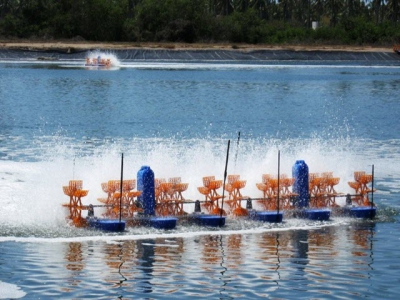Risk management for the aquaculture industry

Last year, Gallagher, a global insurance brokerage and risk management service, partnered with the Global Aquaculture Alliance to sponsor its GOAL 2018 conference in Guayaquil, Ecuador. Though their approaches differ, Gallagher and GAA’s Best Aquaculture Practices, the industry’s leading and most comprehensive third-party aquaculture certification program, seek to minimize risk in aquaculture. In early January, GAA caught up with Joe Filby, a partner at Gallagher, to talk about risk management and the solutions available to support aquaculture operations. Readers are encouraged to fill out the following six-question survey to begin the conversation on risk management within their business.
Aquaculture is no stranger to risk, is it?
No, it isn’t. Its development is driven by it, and its growth is a testament to the industry’s ability to devise solutions when faced with problems. The challenges the industry faces are varied and continue to change over time. Whether these challenges are environmental, logistical or regulatory, they all pose a threat to assets, shareholder interests and the reputation of the business directly impacted and those that share the production chain.
What questions should aquaculture operations be asking themselves?
The last five years alone have seen the aquaculture industry face unprecedented loss events from widespread algal blooms, novel disease outbreaks and extreme superchill. In the wake of such events, it’s important to take stock of how these events progressed and the implications they have on business and production chains. By doing so lessons are learned and some good can come from adversity. If your business was impacted by one of these events how did you mitigate the damage and did you identify improvements to be made to your risk management practices? Was the impact an indirect knock-on from a business in your industry being affected? Even if you were not affected, have you considered how such large-scale events would impact your business and its ability to function?
Feedback suggests risk management practices and infrastructure of those affected was up to scratch by industry standards and adequate for environmental events on typical scales, but were blown out of the water when faced with these exceptional events. Risk management equipment could not handle the extreme load, management practices did not alleviate damage as anticipated and, in the case of diseases, solutions just did not exist.
Were aquaculture operations left with any options?
This left farmers with few options but to watch their stock dwindle and their business suffer. While physically, there may have been no more actions to take, a business should always consider the options available to protect it. Ultimately, in the event of loss, a business has to protect itself financially, so what tools are available to allow a business to do this?
Aquaculture operators are not unfamiliar with insurance; they purchase it for all the exposures they share with any other industry, such as property and liability. It is, however, much less common for an aquaculture operator to insure the asset that makes them truly unique: the fish, the crustacean, the mollusk, the stock, whatever it may be. The stock is a company’s most valuable tangible asset and it should be protected while it is growing in cages, during transit, while it is processed and while the finished product is distributed to where it needs to be. There are options for a company to insure at each of these stages, but choices are often limited and not always easily accessible. When considering risk transfer it can also be difficult to determine how much risk can be retained by the company without impacting its viability and how much should be transferred, which has implications on the cost.
Is there room for improvement?
This state of affairs clearly leaves room for improvement in terms of the depth and breadth of products available and increased understanding of their operation within the industry. As with anything, increased understanding and clarity comes from communication and collaboration, a main theme of last year’s GOAL conference. This should be encouraged here as it is in any other industry area. Insurance involves three main parties: the insurer, the business and their insurance broker. Any conversation and sharing of information between these groups can only be of benefit. It’s not just the fish farmers, hauliers and processors that can learn what products are available and how these can be applied to their operation — insurers need to listen to these stakeholders to devise transparent products that fit the industry, too.
Related news
 Many advantages for tuna exports to ASEAN
Many advantages for tuna exports to ASEAN Most tariff lines being cut to 0% is a favourable condition to boost Vietnam's tuna exports to ASEAN.
 Pangasius fish price drops, market fluctuates
Pangasius fish price drops, market fluctuates After strongly increasing for a long time, the prices of raw pangasius fish in provinces in the Mekong Delta dropped to around VND23,000-VND25,000 per kilogram,
 Japan among top 10 importers of Vietnam’s tra fish for first time
Japan among top 10 importers of Vietnam’s tra fish for first time Vietnamese tra fish, a major foreign currency earner, has gradually won the trust of Japanese consumers as seen in the market’s emergence as one of the 10